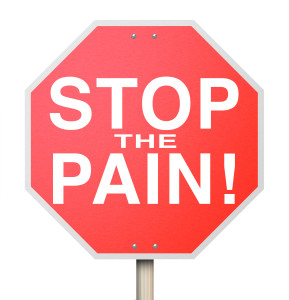 As we get older, what is the one thing that NYC residents (and most of the world’s population) complain about? Pain! Pain alleviation may be closer than you think. As you go through your daily routine, you may not realize that what you’re doing in your day-to-day may attribute to pain relief. Make a few simple modifications and eliminate your pain with these techniques and habits that are easy to integrate into your lifestyle.
As we get older, what is the one thing that NYC residents (and most of the world’s population) complain about? Pain! Pain alleviation may be closer than you think. As you go through your daily routine, you may not realize that what you’re doing in your day-to-day may attribute to pain relief. Make a few simple modifications and eliminate your pain with these techniques and habits that are easy to integrate into your lifestyle.
Exercise
The physical benefits of exercise are vast. As you exercise, your body produces endorphins, chemicals in the brain which act as natural painkillers. The release of endorphins blocks pain signals from reaching your brain and helps to boost your mood and alleviate stress. Additionally, exercising strengthens muscles which can prevent further injury and pain. Incorporate strengthening exercises into your workout routine to maintain a strong back, reduce inflammation, and ease muscle tension. So get moving, it will help you reduce chronic and acute pain!
Quit smoking
It’s no secret that smoking has several negative side effects on your body. Tobacco use can slow healing and increase pain sensations. It also restricts the flow of nutrient to spinal discs which can dry out and rupture discs, making smokers more vulnerable to back pain.
Good sleeping posture
If you like to sleep on your back, elevate your legs with a pillow to relieve pressure from your back and support the natural curve of your spine. If you prefer to sleep on your side, put a pillow in between and knees and pull them slightly towards your chest to ease tension. Also, choose a pillow that enables your neck to be at an equal level with your chest and back. Sciatica and lower back pain are common symptoms of poor sleeping posture, this pain can easily be reduced!
Healthy Diet
It may seem like a no-brainer but if you eat right you will feel great. By incorporating foods rich in antioxidants and other pain reducing properties, not only will you maintain a healthy body but you will also alleviate your pain. Foods rich in Omega 3- fatty acids, such as salmon, improves blood flow which can help with the healing process. Cherries contain anthocyanin, a powerful antioxidant, which blocks inflammation and obstructs pain enzymes. If you’re a fan of spicy foods, chiles contain a great source of capsaicin, an active component which naturally acts as an anti-inflammatory by desensitizing the nerve receptors which produce pain. Capsaicin also helps to stimulate endorphins, the body’s natural pain killers.
Heat therapy/Applying ice
Heat it up or cool it down. Depending on the type of injury and how long your pain persists, applying ice or heat can provide for a simple, effective, and inexpensive way to alleviate your pain.
Ice packs should be used for acute or new injuries. After the initial injury, there is increased inflammation due to the ruptured capillaries. Ice helps to constrict blood vessels and prevent further swelling.
Conversely, if your pain does not subside after 48 hours, you would want to apply heat to your injuries. The application of heat dilates your blood vessels and increases blood flow which leads to a greater flow of oxygen and nutrients to the affected spot. Heat also stimulates the sensory receptors in your skin which suppresses the pain signals to your brain. Additionally, it relaxes your muscles and decreases stress. Dependent on the type of injury, the longer the heat is applied, the better. The application of heat is not appropriate for certain conditions; consult your doctor to find the most effective heat therapy treatment for you.
Learn Deep Breathing
Stress not only affects you emotionally but also physically as it can make chronic pain worse. Meditation and deep breathing will enable your body to de-stress and relax. By utilizing deep breathing techniques and meditation, one can shift their focus and perception of pain so that they feel less affected. By slowing down your breaths and cutting them in half, you can dramatically reduce your pain. According to a study, most adults take 12-18 breaths a minute. In this study, women whom had fibromyalgia were exposed to heated probes and had to rank their pain. The group was divided in half into those who breathed at their normal pace and those that breathed at half their normal rate. Those who slowed down their breathing rated their pain as less intense than those who didn’t. Now take a deep breath and breathe in, breathe out. You will alleviate your stress and pain in one shot!
